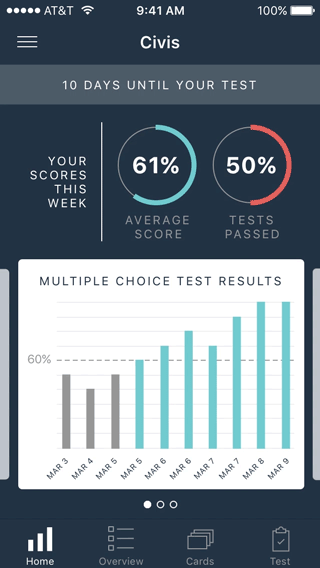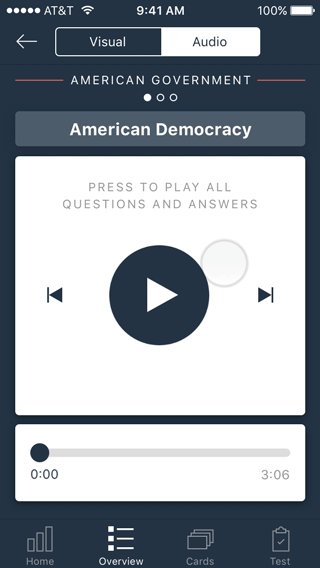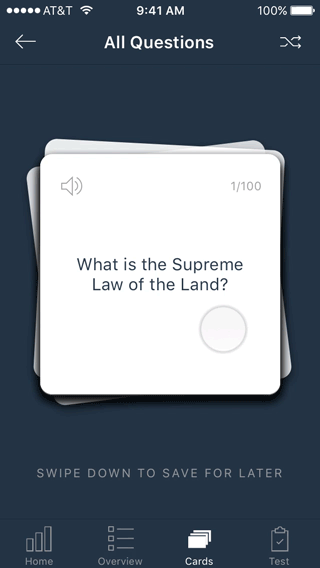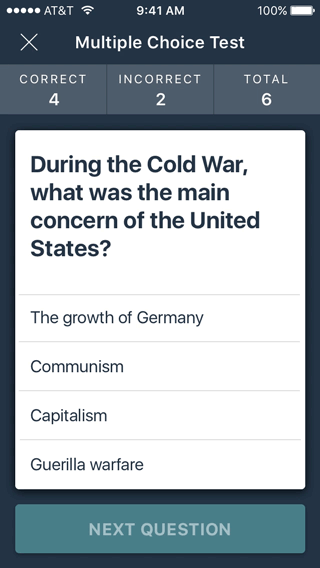Civis is an app created by myself, Stella Ding, Johnny Knutsen, and Grant Muma, that enables users to practice for the US Civics test, which is a part of the naturalization process to become a US Citizen.
In addition to my role in discussions about information organization and features, my personal responsibilities included leading and building out the visual design direction and creating icons.
The US Citizenship test is essentially an interview in which a US official asks the applicant 10 questions that can be selected from a pool of 100 total questions. Currently, the US Government provides applicants with a test booklet and an audio CD of the hundred questions to help them study, but neither of these methods are particularly interactive or ideal for learning. Civis was created to replace those methods and provide additional ways for users to study the material.
GOals
- allow users to view their progress quickly and easily
- incorporate functions that are adjacent to the test booklet and CD currently given out by the government
- add a flashcard function that is fun and intuitive
- create a pleasing visual design that communicates credibility
- design a practice test that closely simulates the verbal nature of the real test
Considerations
- many of the questions have more than one correct answer
- voice recognition technology is far from perfect, especially if the user has an accent
- one hundred questions are an awful lot—they should be broken down into more manageable chunks
- digital flashcards should behave similarly to real flashcards
OUR SOLUTION
The home tab encourages users to study by showing them at a glance the progress that has been made since they started using the app. Separating test results by test type is important to show accurate progress over time as not all test types are the same level of difficulty. The home screen also gently reminds users of their test date once that information has been entered into the program.
The overview tab of our app effectively replaces the current materials provided by the US Government to applicants. A visual list view as well as an "audiobook" version that reads the questions and answers in succession allow users to review information in the way that their brain processes it best. The audio mode is also great for use in the car, as it can be played over the stereo without needing input while driving.
Cards mode allows users to quickly go through questions in their spare time, and swiping a card down adds it to the "saved for later" stack, which helps the user collect questions they need to spend extra time studying. There is also a "missed on tests" stack which autopopulates with questions that were answered incorrectly on the practice tests.
Test mode has been designed to be friendly and nonintimidating. There are three test types: multiple choice, written, and verbal. Each test provides 10 randomly chosen questions, and the user must get at least 6 right to pass, which is the standard for the real test. The multiple choice test is best for beginners, and the written test allows users to test themselves more rigorously while still being silent, which is great for use on the bus or in a waiting room. The verbal test most closely simulates the real test, in that questions are provided audibly and the user is asked to respond verbally. Because voice recognition is imperfect, if the software misunderstands what the user said, the user has the opportunity to edit their answer before submission.
The full prototype in InVision can be viewed here.










